On Aug 25, 2020, NIA (National Investigation Agency) filed the charge sheet in the Pulwama fidayeen attack in Jammu court, after 16 months of rigorous and intensive investigation (The Print, Aug. 25, 2020). NIA's charge sheet, a bulky document running into 13,800 pages, identifies 19 individuals including JeM (Jaish-e-Muhammad) chief Maulana Masood Azhar, his brother Abdul Rauf Azhar and others for "carrying out the attack at the behest of Pakistan." Additionally, the charge sheet mentions seven alleged JeM operatives-— Tariq Ahmad Shah, Mohammad Abbas Rather, Mohammad Iqbal Rather, Waiz-ul-Islam, Insha Jan, Shakir Bashir Magrey, and Bilal Ahmed Kuchey as accused in the Pulwama case — apprehended from Kashmir in the last one year for assisting the attackers with logistics (India Today, Sept.5, 2020).
Before delving deeper into the detailed analysis of the charge sheet and its implications, it may be recalled that on Feb 14, 2019, so called commando Adil Dar, a JeM suicide bomber from Kashmir, rammed an explosives-laden car into a convoy carrying Indian security forces personnel from CRPF (Central Reserve Police Force) killing 40 soldiers. The horrifying act of terror was not a routine act of violence, distinct only in the number of casualties and the modus-operandi. Instead, it reflected the mainstreaming of a dangerous suicide bombing trend, which began with the Pathankot fidayeen attack (2016). Pulwama was the culmination of the series of trans-border attacks by Pak-sponsored terrorists over the last five years.
Brief Background- Pathankot, Uri, and Pulwama
After swearing-in, PM Modi started a series of initiatives to normalize relations with Pakistan to promote peace and economic prosperity in South Asia. It began with inviting his Pakistani counterpart Mr. Nawaz Sharif along with other SAARC nation-heads to his swearing-in ceremony (Carnegie India, Feb. 12, 2016). Reportedly, President Sharif’s decision to attend the event upset the generals in GHQ Rawalpindi.
Later, realizing that the Indo-Pak peace process needed a unique, unconventional, and dedicated effort with a sincere intent for peace, PM Modi even landed up at Mr. Sharif's daughter's wedding ceremony in a personal visit (Dec. 2015), defying standard diplomatic protocols (Carnegie India, Feb. 12, 2016).
Though, for his innovative embrace to unite hearts and minds of the two arch-rivals on the lines of "you give an inch, we move ahead a mile," he faced criticism even at the home front from strategic and intellectual quarters, the sole objective was to rejuvenate the peace process that began under the enlightened leadership of PM Vajpayee. Besides, in 2015, India initiated the 'comprehensive bilateral dialogue' to resolve ten issues, including Kashmir, trade, and terrorism. On the other side, there was no genuine intent for peace. Almost a week after PM Modi's personal visit to Mr. Sharif's house, the Jaish fidayeen squad attacked the Pathankot airbase on Jan 2, 2016. Delhi exercised restraint against the massive media and public pressure for retaliatory strikes as PM Modi wanted to give peace a sincere chance.
Instead, the ISI masterminds were devising shrewd and more menacing ways to revive militancy in Kashmir. Despite PM Modi's sincere peace overtures, Pakistan continued to strengthen and empower Islamist proxies like Hurriyat and Jamaat-i-Islami, which played a crucial role in the 2016 agitation, and also the Jihadist terror groups like Lashkar, Hizbul Mujahidin (HM), and Jaish. Due to heightened security and vigil on the LoC and IB after the concertina wire fencing, the infiltration of foreign terrorists (FTs) was becoming a risky affair. Hence, Pakistan wanted a massive local agitation-like situation fuelling hatred against India and resulting in alienation to revive local militancy. It was achieved through post-Burhan Wani civil unrest. The homegrown militancy, which was long dead in the late 1990s, came back in full swing. As per the veteran journalist Bashir Assad's testimony, the ISI pumped in INR 450 crores via its proxies to fund post-Burhan Wani valley-wide violent civil unrest and agitation (K-Files-The Conspiracy of Silence, 2019).
South Kashmir became a hotbed of militancy with hundreds of local youth joining terror outfits. Stone-pelting, civil protests, and encounters with the Security Forces (SFs) increased in number and intensity both. In this milieu, the Jaish Fidayeen squad once attacked the Uri brigade headquarters on Sept 18, 2016, killing 23 soldiers.
After that, in various public pronouncements and with other measures like boycott and declining participation in the SAARC summit, India made it explicitly clear that the terror and talks cannot go together. Further, through retaliatory surgical strikes on launching pads in PoK, killing 150 Pakistani terrorists, India gave a clear signal that Delhi was steadfast in its adherence to "zero tolerance" to cross-border terrorism. However, Pakistan's behaviour continued to be the same.
Hell-bent on its destructive machinations, in the post-Burhan phase of militancy, ISI's prime focus was on nurturing and strengthening the trend of suicide bombing and IED explosions through local Kashmiri militants, a phenomenon hitherto unseen in Kashmir. Due to Wahhabi extremism's rapid spread and the flow of Pan-Islamist ideas and practices following the Arab Spring in the Middle East & North Africa (MENA) region, through social media, Kashmir militancy had become overwhelmingly Islamized (VIF Paper, Mar., 2019). Jihadist doctrines of establishing the caliphate motivated the new-age militants like Burhan Wani and Zakir Musa. ISI left no stone unturned in capitalizing on this sentiment and strengthening the process of religious radicalization. Besides, India's heavy crackdown on terror infrastructure and exposure of separatist leadership's involvement in corruption and development initiatives under the Governor's rule weakened the ideological foundations of Pakistan's jihadist narrative Kashmir, nullifying its 30 years of investment in blood and bayonets.
Ultimately, it all culminated in the most lethal fidayeen attack at Lethpura, Pulwama, in which a local Kashmiri volunteered as a suicide bomber. India retaliated with Balakot airstrikes killing 300 terrorists at a Jaish training camp in Balakot. Pulwama attack can be called a watershed in India's overall counterterrorism framework, particularly the state's approach to dealing with terrorism. Not only it brought the two arch-rivals on the verge of a full-fledged conventional war, but it also woke Delhi out of its slumber. Post Pulwama, India counterterrorism has undergone a sea change. Globally too, India has emerged as a foremost leader in the war against terror.
The Charge Sheet
The charge sheet results from intensive investigations and rigorous hard work of one and a half years, against heavy odds and in a milieu that was best suited to absolve Pakistan of any involvement in the heinous terrorist attack. As mentioned earlier, post-Burhan Wani civil unrest (2016), Pakistan had made a massive investment in reviving local militancy, resulting in a large number of local youth in South Kashmir joining HM, LeT, and the JeM. Between 2016 through January 2019, local youth recruitment increased multifold, leading to more and more encounters with SFs and the killing of local militants. In 2016, 165 terrorists died; in 2017, 220 died, and in 2018, the number rose to 271. An overwhelming majority of these killings included local terrorists (South Asia Terrorism Portal).
Further, in the post-2016 militancy, Pakistan, through its proxy foot soldiers, mostly radical clerics of Jamaat-i-Islami and Ahl-i-Hadith factions, Hurriyat cadres, and OGWs (Over Ground Workers) orchestrated large scale stone pelting at encounter sites disrupting the legitimate security operations. Despite all the precautions and adherence to all the protocols, the forces had to act harshly against stone pelters. On a few occasions, civilians died, and many of them got injured by the pellets fired by SFs. All this led to massive alienation and more protests. Along with this, the neutralization of local militants was further adding to the 'alienation' and hatred against SFs. In parallel, ISI-sponsored media platforms, NGOs, and advocacy groups in Kashmir and the western world were blowing such issues out of proportion with provoking pictures, biased articles, and fabricated reports. The whole milieu was orchestrated in such a manner that for a lay observer, the first logical explanation would be that the incident was entirely an act of homegrown terror by a local youth seeking revenge against the Indian SFs and Pakistan had nothing to do with it.
However, NIA's threadbare investigation based on chemical and forensic analysis has produced irrefutable evidence establishing Pakistan's involvement in the incident beyond doubt. The most complex puzzle that rattled our security apparatus was the availability of explosives in such large quantities even though India had majorly tightened the security grid on the LoC after 2000. NIA solved the mystery. As per NIA's investigation, the explosives that included RDX, ammonium nitrate, and nitro-glycerin were smuggled into the valley from Pakistan over four months during the moon's lunar phase (India Today, Sept. 5, 2020).
Initially, it appeared to be a blind case. NIA was finding it extremely difficult to get hold of single useful clue that could lead them to the terror masterminds and their operatives in the valley. Finally, in the encounter of the 22-year old JeM operative and Pakistani national Umar Farooq by SFs in Nowgam near Budgam in March 2019, the Police recovered his partially damaged Samsung galaxy note cell phone. With that, NIA hit a goldmine, though it took months to access the data stored in the phone due to legal and procedural formalities. His phone contained massive data that helped NIA ultimately crack the case. The data retrieved from his phone included a plethora of video recordings and voice messages, chats, and pictures, including those of assembling IEDs. As per India Today's interview with a senior NIA official, there were 16 hours of voice messages, including Umar Farookh's conversations with JeM's Pakistan-based senior leaders (India Today, Sept. 5, 2020).
Umar Farookh's background makes the investigation even more interesting for security experts. His father, Muhammad Ibrahim Ather, is the brother of Maulana Masood Azhar, and he played an essential role in hijacking the Indian airliner IC-814 in 1999. In 2016, Athar's brother Ammar Alvi sent 20-year old Umar Farookh to Al Qaeda camp in Sangin (Afghanistan) to train in explosives. Umar's brother Ibrahim Haidar was also a well-trained sniper who infiltrated in Kashmir and led JeM. Umar's phone had pictures of Haidar's send-off party before his journey to Kashmir, which Masood Azhar had organized. JeM has the tradition of organizing farewell parties for terrorists leaving for Kashmir. On April 14-15 Umar infiltrated into Kashmir near Hiranagar in the Samba-Kathua sector of the IB (International Border). From there, he was carried by a network of OGWs to Kakapura village in Pulwama(India Today, Sept. 5, 2020).
The NIA charge sheet also mentions in detail about the opaque network of trusted OGWs which JeM has created to infiltrate its cadres in Kashmir, mostly from the Jammu, Samba, and Kathua region. Further, another robust pillar of NIA's charge sheet is the evidence proving financial trail in the Pulwama case. Umar's accounts in Meezan bank (Peshawar) and Allied Bank (Khyber Agency) received a transfer of 10.43 lakhs over two months. Later, the money was sent to Umar in Kashmir through Hawala channels. The NIA is in possession of the receipts of the fund transfer mentioned above.
Implications
The Pulwama suicide bombing case can be safely regarded as a watershed in India's counterterrorism doctrine and its practice. For long, India had insisted on "zero tolerance to terror"; however, adherence to the doctrine was yet to be translated into a reasonable follow-up action. What happened post-Pulwama was a new India's force posture that clearly signalled that adversaries orchestrating terrorist violence would have to pay a cost, and the costs could be harrowing. In intensity and horror, the Pulwama attack was unprecedented. It shook the nation out of its three decades of slumber and pacifism. Finally, India was compelled to bid goodbye to its classic strategic restraint.
India's common man was moved to the core when the horrifying images of the brutal attack appeared on the TV sets. The attack brought people from diverse castes, regions, and religions on a common platform against terrorism and the entire nation wanted retaliation for the blood of its soldiers. Hence, a thorough investigation to identify and prosecute all the terror masterminds behind the attack was the essence of the nation's collective demand for justice and honor for its SFs. The whole country was waiting for this document. It is not just a piece of legal paper but also an expression of Indian's just war against terror.
Besides, several experts, politicians, and intellectuals with dubious loyalties and suspicious sources of foreign funding were floating conspiracy theories about the attack, casting aspersions on the integrity of a democratically elected government. The charge sheet bringing forth substantial shreds of evidence of Pakistan's involvement in the attack from planning to its execution has lain to rest all such baseless conspiracy theories.
Lessons for the Future
The charge sheet also leaves many crucial lessons for our security apparatus. It has brought to light an effective infiltration system from Gurdaspur to Jammu, Samba, and Kathua region. The perpetrators of the attack infiltrated through the IB in the areas mentioned above. The Pathankot attackers also came through the Gurdaspur route. Unlike other groups, Jaish has always preferred the IB to infiltrate. Despite making a strong security grid on LoC, India remains vulnerable on the IB, where it is much easier to infiltrate than the LoC, where the risk to life is much higher due to inclement weather, challenging terrain, and extra vigil. However, in the IB region, India's security grid needs a complete overhaul. As per the author's informed interlocutors, in the entire 70 km patch from Gurdaspur to Jammu, there are merely 300-350 people effectively guarding the border. In various inspections visits, the central agencies had observed a number of shortcomings. The area has many tunnels that are being utilized for infiltration. This area needs an enhanced deployment, modern technology, and highly efficient and motivated border vigil machinery to bust such tunnels and check infiltration.
Besides, the economic activity on the border needs to be curtailed, and the people in the border regions could be moved further with proper compensation. In the past, the ISI masterminds also devised a plan to settle their ‘assets’ in Jammu region near the border. In line with that, as investigated by Ikjutt Jammu's (a local NGO), there was a massive attempt to colonize the Jammu region with people from the valley with extremists and separatist mindset, and interestingly the state government turned a blind eye when it was being executed, raising many suspicions on their intent (JK Times, Feb. 6, 2020). In the future, the border management needs to investigate this issue and uproot people with anti-national leanings from that area as they help the infiltrators in logistics and shelter. Further, there can be a second line of fencing between the BSF and army zones. Lastly, the Jammu-Srinagar highway, which is main artery to ferry terrorists in the valley, needs a smart management and domination system.
The charge sheet also brings forth several shortcomings in the functioning of India's intelligence agencies. Senior officials interviewed by the author confirmed that in the last three major attacks i.e., Pathankot, Uri, and Pulwama, they came across a lack of coordination among the various intelligence agencies. Most of the officials tend to have a narrow focus on promoting the interests of their employer agency. The lack of coordination was visible in a reluctant attitude to share pre-emptive intelligence, follow-up information after the attacks, and non-cooperative attitudes in investigations.
Further, the investigations have also enlightened the counterterrorism community about the level of religious motivation, indoctrination, commitment, organizational skills, and combat training. The chats and voice messages of 22-year old Umar revealed that he was an extraordinarily committed man to Jihad. Quoting a senior NIA official on the condition of anonymity, India Today report states that "he was not just a bomb-maker, but also a good strategist who knew how to use propaganda to further the cause."
His expertise in explosives and strategic planning were impressive. He set up mini-modules to carry out the attack. The core and strike modules were to assist him in planning and executing the attack. They included Pakistani nationals-Muhammad Ismail, Kamran Ali, and QariYasir, who were IED experts. During infiltration, each one of them brought 35 KGs of RDX. He employed local militants and OGWs for logistics and transport modules whose job was to find shelter, safe houses, and arrange logistics. Throughout the planning, he was continuously in touch with JeM commanders in Pakistan. In early February, he sent pictures of assembled IEDs to Ammar Alvi and Rauf Asghar, who gave the attack's final permission. Initially, the attack was planned for Feb. 6th but had to be postponed because of heavy snow. For a week, the explosives-laden vehicle was parked outside Bashir's house (the member of the transport module) in Kakpura (Pulwama). The fact that it did not come under the scanner of security agencies raises many questions on the agencies' competence and intelligence network.
After the attack, Umar told his uncle that it would lead to an all-out war between India and Pakistan, and Kashmir would get freedom. He also assured that Masood Azhar and other JeM leaders put under custody after the Pulwama attack would be released soon as his ISI contacts had assured him. The charge sheet also confirms that he got the permission for another fidyaeen attack for which he started collecting explosives in March 2019 but was neutralized by the SFs before that. The details mentioned above offer great lessons for future counterterrorism scholars, investigators, and officials dealing with radicalization, special operations, and propaganda warfare.
Lastly, an encouraging aspect of the Pulwama investigation was the cooperation that India received from the US counterterrorism agencies, which was largely missing in the previous investigations in high-profile terror cases. It sets a great precedent that there is no space for notions like "my terrorist" or "your terrorist" in the war against terror. The world community must come together in the battle against terror. The cooperation and commitment have to be in words and actions both. Timely intelligence sharing can save humanity from many catastrophes and nations from going to wars over deadly acts of terrorism by a bunch of extremists.
What lies ahead for India-Pakistan relations?
As expected, Pakistan's foreign office categorically rejected the NIA's charge sheet as a 'mischievous attempt' to implicate Islamabad in the terror attack. Further, the foreign office said that India failed to provide credible evidence, and "the fabrications in the reported 'charge sheet' are patently designed to further the BJP's anti-Pakistan rhetoric and its narrow domestic political interests (Hindustan Times, Aug. 27, 2020)."
In a reply, the MEA spokesperson observed that "Jaish-e-Mohammed had claimed responsibility for the Pulwama attack. The organization and its leadership are in Pakistan. It is regrettable that Masood Azhar, the first accused in the charge sheet, continues to find shelter in Pakistan. Enough evidence has been shared with Pakistan, but it continues to evade responsibility." Further, he also said that Pakistan has, till date, not taken 'credible action' against the perpetrators of the 26/11 Mumbai attacks (The Print, Aug. 27, 2020).
In the future, it is futile to expect anything from Pakistan. Terror groups like JeM and LeT are strategic assets nurtured and empowered by ISI over the last three decades. Even under the face of tremendous international pressure, Pakistan has always tried to protect and sustain the terrorist groups and successfully hoodwinked the global counterterrorism watchdogs. In the future also, Islamabad is most likely to continue protecting its strategic assets. After the Pulwama attack, it was expected that good sense would prevail in GHQ Rawalpindi, and ISI masterminds would refrain from supporting cross-border terrorism.
However, Pakistan once again proved it that rationality and sanity are light years away from the corridors of Islamabad and Rawalpindi. Instead, Pakistan has come up with a renewed vigour to exacerbate infiltration and arm the FTs with the latest gadgets and modern weaponry, including drones, to attack security installations. Pakistan continues to strengthen its sabotage machinery and improvise on tactics and strategy, with some of its best partners in crime, such as Turkey and China (Sunday Guardian, Mar.7, 2020). It seems as if India's adversary will not learn its lessons until it comes to face-to-face with Delhi's decisive retaliatory action.
(The paper is the author’s individual scholastic articulation. The author certifies that the article/paper is original in content, unpublished and it has not been submitted for publication/web upload elsewhere, and that the facts and figures quoted are duly referenced, as needed, and are believed to be correct). (The paper does not necessarily represent the organisational stance... More >>
Image Source: https://images.indianexpress.com/2020/08/Mohammed-Umer-Farooq.jpg

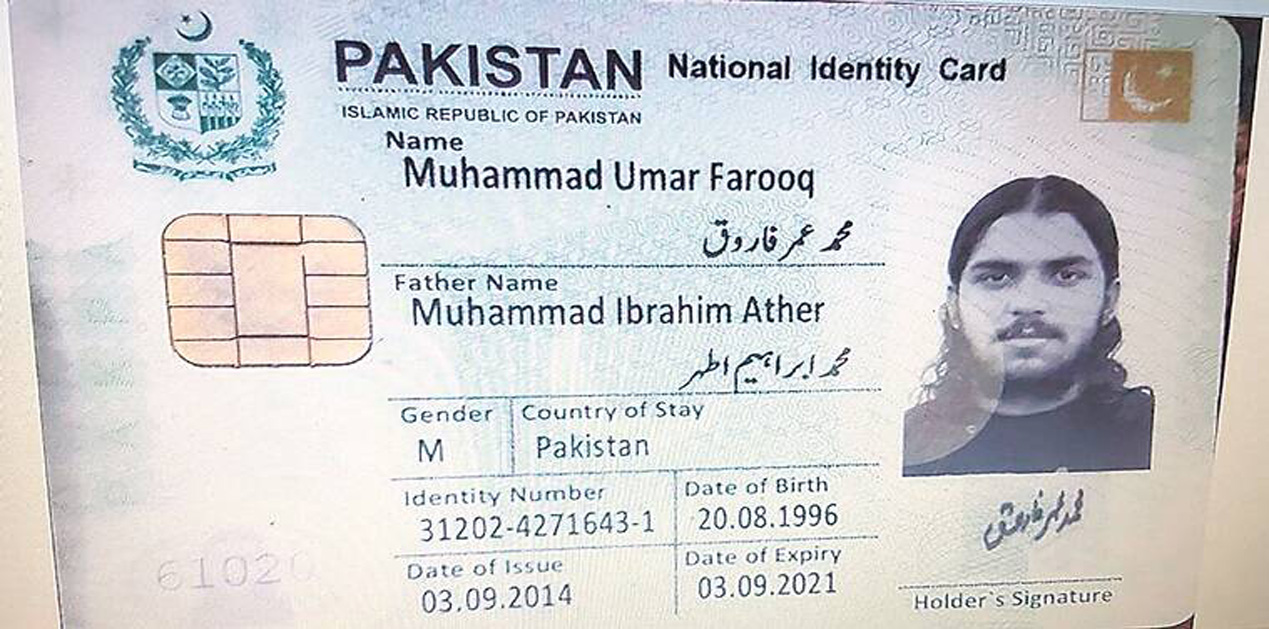



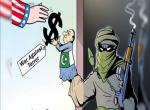

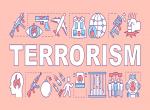

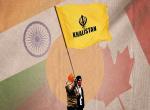
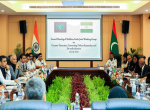
Post new comment